
A Battlegames Special Guest Post by Sean Souter
You’re going to love this terrain project! It’s got it all. Use of bricks dates back to 7500 BC so terrain from any era—ancients, medieval, WWII, and modern—can benefit from the liberal use of bricks to enhance the look of scenery. Because you decide the size of the bricks, you can easily scale the size up or down to suit your needs. A tenner should more than cover the costs and give you an endless supply of bricks. Lastly, this is not an involved project, an hour tops to make the jig, so put on a Battlechat and get on with it!
You’ll need the following consumables to create the brick-making jig: a thicker piece of flat styrene about 5cm x 10cm, a 30cm length of square styrene rod the thickness or width of the size of brick you’d like to make, and a good amount of plastic cement. A razor saw or very thin cutter is also needed. The other tools required depend on how precise you’d like to be. At minimum, you’ll need a ruler and pencil. I used a small square and a very accurate T-rule as well, but they aren’t essential.
Cut and firmly glue lengths of square styrene around the outside of the flat styrene base. Make sure there’s a firm bond over the entire perimeter. Put a bit of weight on it—Henry’s Wargaming Compendium can be pressed into service yet again—and let it set. Carefully mark the styrene so you can cut with accuracy later. The spacing depends on how long or wide you want your bricks. Between 2mm or 3mm is about right. A set square and good ruler are handy here but, really, as long as the marks are a reasonably consistent distance apart, it’ll all work out.
The last step is to cut through the square styrene down to the base along the marks you’ve made. Using a square helped me get consistent cuts but, again, it’s not essential as long as a reasonably even set of cuts is the end result. To help my tired eyes with lining up the two sides, I used a Sharpie [marker pen] to mark off every fifth square. This’ll come in handy later as well.
You get what you pay for and that’s exactly why the 500 gram block of Das air-dry clay cost me only a dollar. The problem with this cheap clay is that it shrinks and cracks terribly and will warp anything it’s stuck to as it dries and curls up. It’s also highly porous, so it will soak up loads of paint and glue once dried. It’s exactly these otherwise annoying properties, however, that make air-dry clay perfect for this particular project.
Once you roll out the clay into your jig, let it dry for about five minutes so it forms a stiffer material than its original, gooey mud consistency. Using a thin piece of metal, or a razor saw blade, and your evenly spaced cuts, create an even cross-hatch by pressing the blade down all the way through the clay. This is where the coloured markings on the jig help a lot! I found that going over the clay a second time along the same cut lines improved the shape of the bricks at the end.
Put the jig and clay in a warm spot and leave it overnight. As the clay shrinks, it will pull apart along the cut lines leaving nice, even bricks. Sometimes, the clay is slightly rounded on top of each brick due to the way it dries. I rubbed it all over with medium grit sandpaper to make it all flat again. If you want your bricks to have a more varied appearance, now’s the time to lay on a few generous washes in different colours. Depending on what colour clay you started with and the destination for your finished bricks, you can create brick colours and washes that suit your needs. Here, the cheap clay again comes into its own. It will absorb the wash and stain in a way that looks very natural. I used a dark umber and a light grey wash to get a red-brown brick colour. Again, a simple adjustment of the thickness of square styrene and distance between cuts on your jig will get you bricks in different scales. Cheap clay is versatile stuff.
Once you take the bricks out of the jig you’ll find the bottom of each brick has a little bit of extra clay or flash. Get yourself a good palmful and rub it around between your hands. No need to be gentle with this step. The flash will come off and you’ll be left with handfuls of near perfectly formed bricks to decorate or build your miniature empire. As scatter or the building blocks of a structure, you’ve now got another terrain technique in your toolkit. Rome still can’t be built in a day, but you can make all the bricks you’ll ever need in that same space of time. Happy building!
All content and images for this article ©Sean Souter 2018
Visit Sean’s website at https://onseanstable.com for more terrain tips and tutorials and tune in here for his regular guest posts.


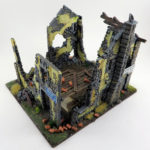



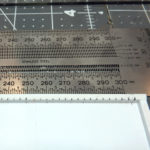
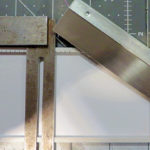
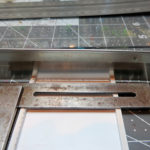
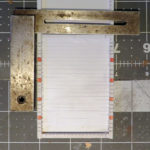
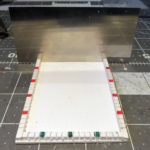

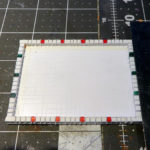
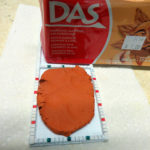
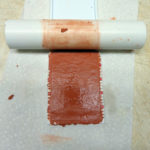
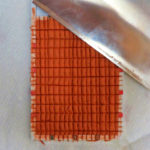

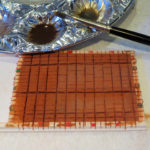

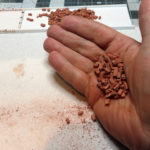
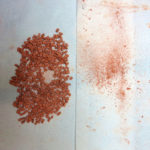
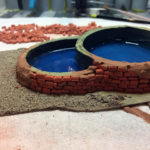
Thanks James, hopefully you’ll be able to put the bricks to good use. Who says the average guy can’t build an empire?
Thats brilliant!